In 2015, the United Nations set the Sustainable Development Goals (SDGs). These goals are a ’call to action’ for all countries to help make the world a better place. The UN states that ’the Sustainable Development Goals are the blueprint to achieve a better and more sustainable future for all. They address the global challenges we face, including those related to poverty, inequality, climate, environmental degradation, prosperity, and peace and justice. The Goals interconnect and in order to leave no one behind, it is important that we achieve each Goal and target by 2030.’
Many schools around the world are participating in teaching and learning about the SDGs through reading, writing, discussions, speeches, raising money and awareness, creating art, project-based learning, and collaborating for change within their community. The seventeen goals to transform our world are:
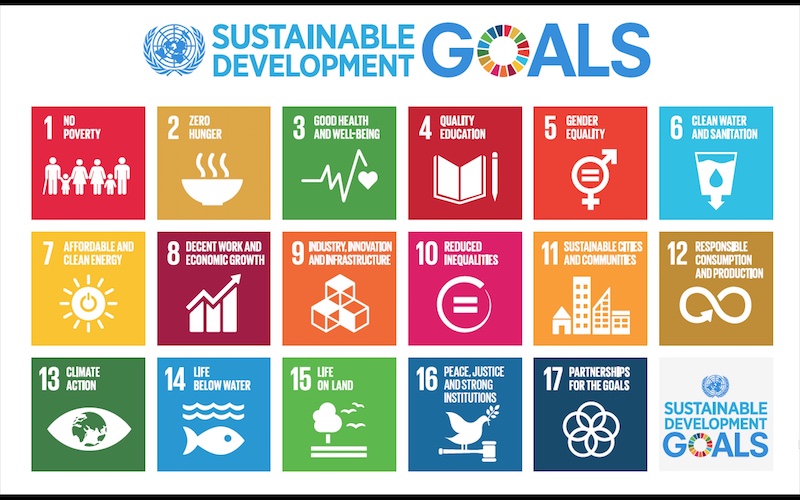 https://geolsoc.files.wordpress.com/2018/12/sustainable_development_goals.jpg
https://geolsoc.files.wordpress.com/2018/12/sustainable_development_goals.jpg
How Do I Get Started?
If you’d like to get your students and school involved but haven’t done so yet, don’t worry. There are lots of resources online. Check out the UN website for in-depth explanations and information, as well as their student resources (for all age levels). Also, take a look at the World’s Largest Lesson and Teach SDGs websites for posters, videos, lesson plans, and more.
It’s probably easiest if you and your students choose one or two global goals to start with. This way, you can engage in deep learning rather than trying to skim over all seventeen goals.
Writing with WriteReader
Here are some writing activities for your students as they share their thinking and learning about the Sustainable Development Goals. We’ve divided them into three sections as they apply to our three new page types. Of course, these suggestions can be adapted so that the task is accessible for all students.
We’ve also created a new sustainability image bank for your students so that they can easily add appropriate images as they write about the SDGs.
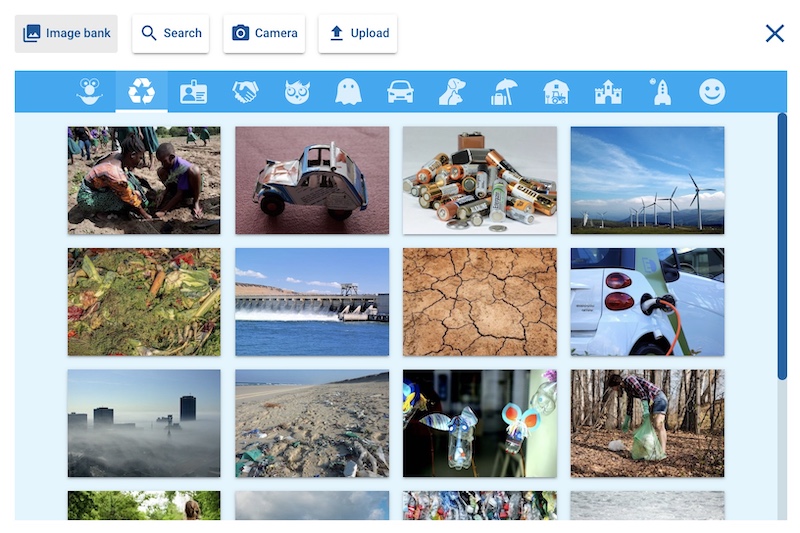
Image, student text, and educator text (up to 300 characters)
(By the way, did you know that we now have a copy and paste button on this page type? Just copy and paste the student text into the educator text field; then edit it to show conventional writing for the child to read.)
- Choose goals that are easy for young children to grasp (eg. hunger, peace). After reading some mentor texts and discussing these concepts, have students write ’I can’ or ’I will’ statements, such as ’I can donate to the food bank’ or ’I will love and accept all people.’ Follow through on some of these statements with collective actions.
- Read the book Imagine a Day by Sarah L. Thomson together. Ask the children to imagine that the sustainable goals were all met. Students can write and/or record a book with each page beginning with ’Imagine a day when .’ After sharing their books, ask your class, ’What can we do to help change the world?’ Come up with a realistic plan for your school or community. Change begins with a dream.
- Watch some videos about clean water. Have students write about the uses for clean water. (eg. I use clean water to take a bath.) Then watch a video about an area in your country or somewhere in the world that doesn’t have clean water. Students can write about how that makes them feel. Who or what is impacted by that? Write a class book about ways to help change that.
- Write about how we take care of our homes. Then, ask the children about how we do and don’t take care of our home, the Earth. Write a compare and contrast book about this discussion.
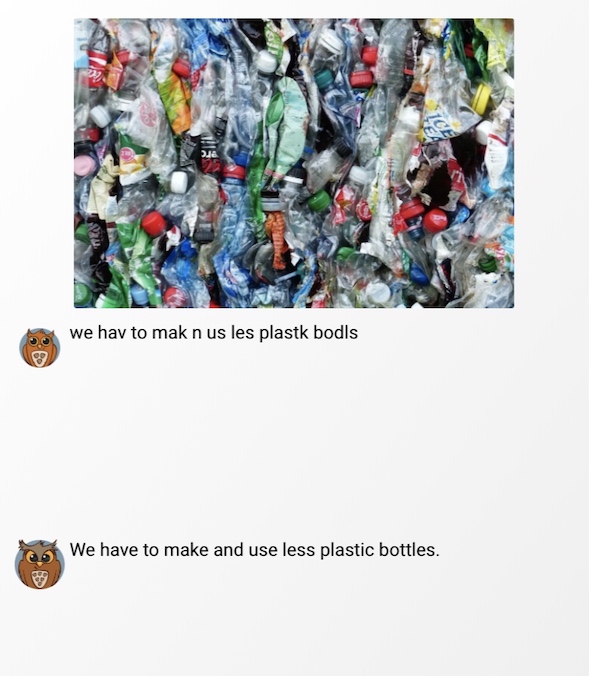
Image and student text (up to 800 characters)
- Students can research changemakers in the world and write a few paragraphs about each one. After adding a photo of the person, they can use the call-out function to add a speech or thought bubble with text. Provide sentence frames like ’I hope that .’ or ’I am committed to .’ or ’I believe .’ The last page of their book could be a picture of themselves with a personal mission statement.
- Make a book of quotes about one of the SDGs (eg. climate action). Students can search for quotes, include the exact quote and who said it, and then add a photo of that well-known person. They can read it aloud and use the record feature to add a recording to each page, just as if that person is saying their inspiring quote.
- Ask the students to pick one of the seventeen goals and write about why it is important to them personally. Why is it a problem? What have they personally seen or experienced in relation to this goal? What can we do to help solve it?
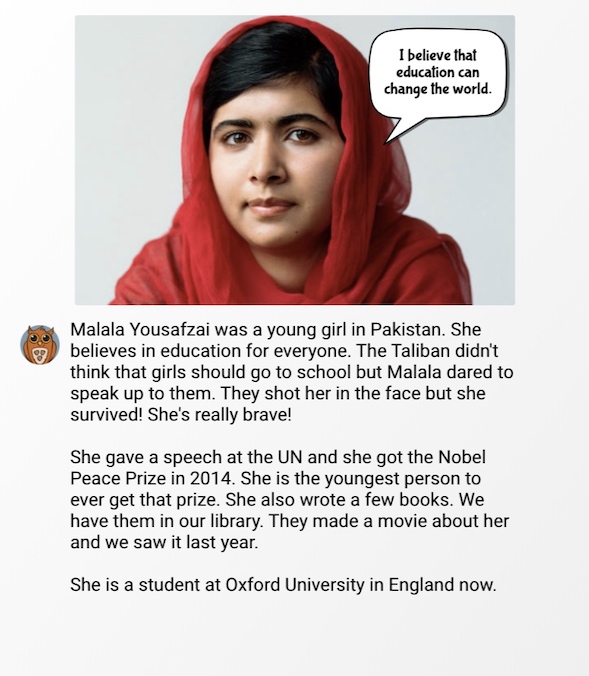
Student text only (up to 1,500 characters)
- Students can write a book to accompany their project-based learning. What did they make and how does it align with one of the SDGs? Why did they make their project? How did they make it and what challenges did they encounter? In other words, what was their product, purpose, and process?
- Students can write a biography of a changemaker. Each page or two can be a new chapter. Co-create the criteria with the students, such as an outline which will determine the table of contents and chapter headings.
- Teams of students can create a WriteReader book to flesh out and keep track of their ideas for design thinking. They will need to come up with a question and try to solve a problem related to one of the SDGs. They will need to create a book with at least five pages with the headings of empathy, define, ideate, prototype, and test. All of their findings and new questions should be kept in this journal.
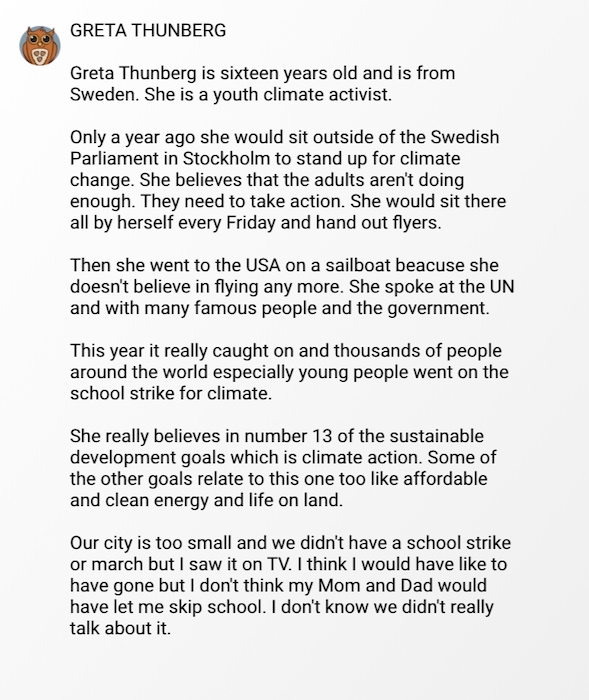
It is our responsibility as adults to help meet the Sustainable Development Goals and to teach children about them as well. Children have wonderful imaginations and are great possibility thinkers. They are not too young to be part of the solution. Let’s join hands and be changemakers for good!
